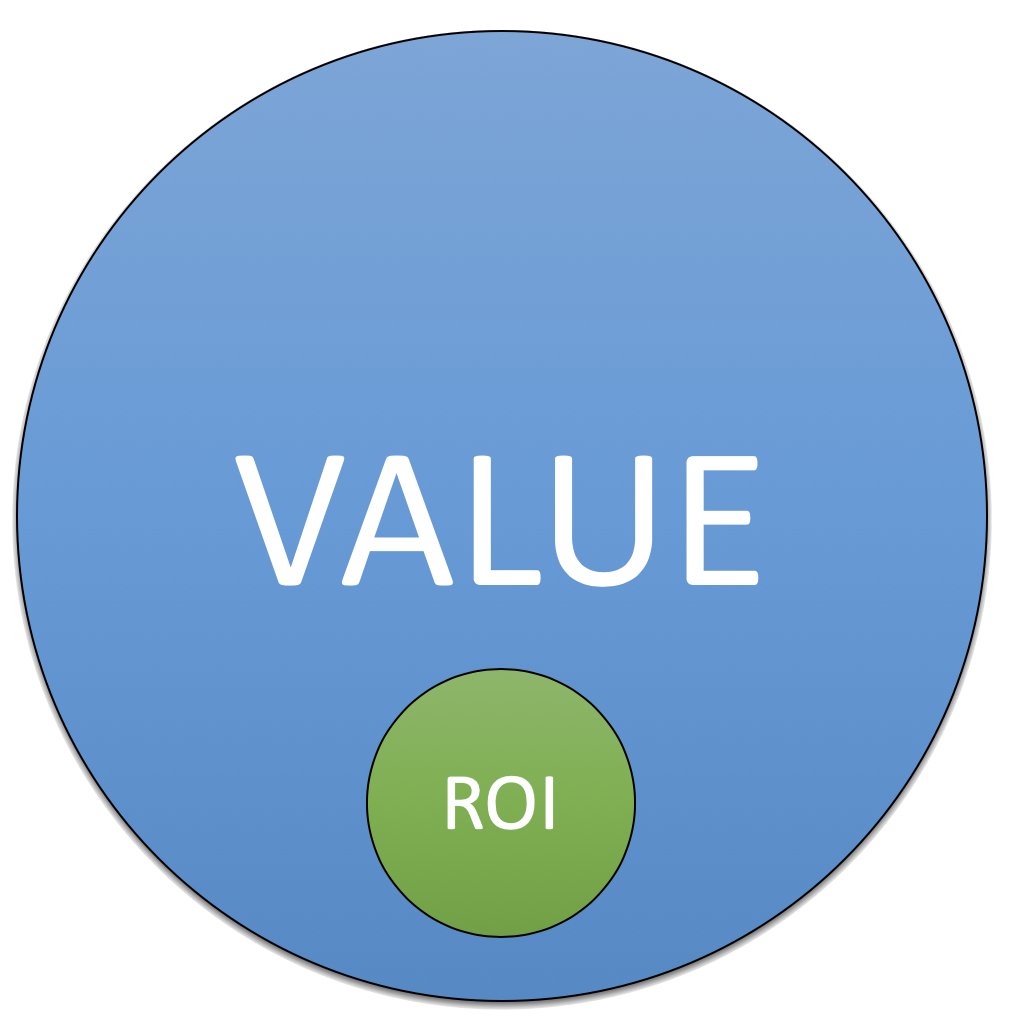Salespeople: Don’t Confuse Value with ROI
Nestled inside the Paris hotel on the Las Vegas strip is Le Burger Brasserie, a French twist on the American burger experience whose menu boasts the famous 777 burger. For the bargain price of $777 you get a Kobe beef patty with pancetta, goat cheese, seared foie gras, arugula, Maine lobster, 100-year-aged balsamic, and a bottle of Dom Pérignon. By all accounts, such a menu offering is completely absurd and should not exist. Especially since the restaurant also offers a standard $14 burger at 98% less cost than the 777.
And yet, it does. And people order it.
One of the reasons this is so perplexing is that in the business world, we are conditioned to expect every worthwhile investment to have a commensurate and measurable financial return. If that’s the case, then what measurable return does the 777 burger provide such that anyone in their right mind would order it? The flaw in that line of questioning points to one of the biggest mistakes sellers make when positioning their solutions. They confuse return on investment with value!
Forget Everything You Know About Value
Return on Investment (or ROI) is a statistic that describes the monetary efficiency of a particular decision. The purpose of calculating ROI as it relates to the purchase of a product or service is to directly measure the return of that investment relative to the investment’s cost. For example, if I invest ten thousand dollars in a software solution that saves me twenty thousand dollars per year, you would say that that solution has a strong ROI. A similarly priced solution that saves me one thousand dollars per year would have a poor ROI.
Buyers and sellers often gravitate to discussions about ROI because they believe it’s a surefire way of validating purchasing decisions about a product or service. Salespeople come to customer conversations armed with stories and statistics about the returns and benefits their best customers enjoy. These typically center around cost savings or increases in revenue. At the same time, customers are keen to understand and validate the seller’s ROI statements to understand if a sensible case to purchase the solution can be made.
But there’s a problem. That’s not actually how we buy!
The truth is, as buyers we value all sorts of things about the things on which we spend money that have absolutely nothing to do with the hard returns we derive from them.
Don’t believe me? Think about something you spend your hard-earned, discretionary money on. Perhaps you enjoy dining out at nice restaurants, playing video games, or collecting rare stamps. Perhaps you like having the latest gadgets and technology. Or perhaps you prefer to spend money on experiences like travel, music concerts, or the performing arts. Now tell me, what is the ROI of those spending decisions? Hard to tell I bet!
In all fairness, I suspect you believe these investments do have an ROI, and they likely do on some level. For example, plunking down your credit card to buy the latest smartphone with more storage and a faster processor may allow you to be more productive at work. And going on a Caribbean cruise during the snowy winter months may help reduce your stress level, resulting in enhanced creativity and longevity. But while buyers may certainly see value from in strong ROI, those reasons are rarely the primary motivators for those purchasing decisions.

You buy the latest smartphone because you value the feeling of being on the cutting edge of technology. You go on the Caribbean cruise because you value spending time with your family and know you don’t do it enough with your busy work schedule. Some middle-aged men buy sports cars because they value the feeling of being cool and youthful. And some people buy life insurance because they value the feeling the security of knowing their family will be taken care of should something happen to them. It is, in fact, the subjective feelings surrounding our purchases, not the objective ROI, that drive the majority of those decisions.
Bonus Video: Don’t Sell Solutions, Sell Feelings!
Bonus Video: How to Sell in Times of Adversity
Decoding Your Value Proposition
In an effort to help decode these buyer actions, researchers from consumer intelligence firm Motista found specific “emotional motivators” that provide a critical indicator of customers’ potential affinity for a company. In fact, these emotional motivators, essentially a proxy for value, were more compelling than any other metric in terms of driving key buying sentiments such as brand awareness and customer satisfaction. While hundreds of value-driven emotional motivators were found to drive consumer behavior, the study found ten that drove significant levels of customer value across all of the categories studied.
| I am inspired by a desire to: | Brands can leverage this motivator by helping customers: |
| Stand out from the crowd | Project a unique social identity; be seen as special |
| Have confidence in the future | Perceive the future as better than the past; have a positive mental picture of what’s to come |
| Enjoy a sense of well-being | Feel that life measures up to expectations and that balance has been achieved; seek a stress-free state without conflicts or threats |
| Feel a sense of freedom | Act independently, without obligations or restrictions |
| Feel a sense of thrill | Experience visceral, overwhelming pleasure and excitement; participate in exciting, fun events |
| Feel a sense of belonging | Have an affiliation with people they relate to or aspire to be like; feel part of a group |
| Protect the environment | Sustain the belief that the environment is sacred; take action to improve their surroundings |
| Be the person I want to be | Fulfill a desire for ongoing self-improvement; live up to their ideal self-image |
| Feel secure | Believe that what they have today will be there tomorrow; pursue goals and dreams without worry |
| Succeed in life | Feel that they lead meaningful lives; find worth that goes beyond financial or socioeconomic measures |
The researchers cite examples such as a major bank that introduced a credit card designed to inspire an emotional connection within its millennial customer base. As a result of connecting with their customers’ values, the bank found that use among that segment increased by 70% and new account growth rose by 40%. In the consumer products space, the manufacturer of a leading household cleaner not only reversed their slide in market share but moved into double-digit growth territory within a year of launching product messaging designed to maximize emotional connection. And a nationwide apparel retailer shifted its buyer experience to focus on emotionally connected customer segments, seeing same-store sales growth skyrocket more than threefold.
It’s important for salespeople to be aware of what their customers value and recognize that value is a more expansive and powerful concept than ROI. By properly understanding and leveraging these emotional motivators, we can achieve greater levels of growth and profitability while greatly enhancing the satisfaction of our buyers.
So the question is, when making a purchasing decision, what subjective feelings does YOUR ideal customer value?
Bonus Video: Salespeople: Don’t Confuse Value and ROI!
Bonus Video: What your customers value has changed! Has your pitch?
We promise never to send you junk or share your email! Just helpful sales insights.














Leave a Reply
Want to join the discussion?Feel free to contribute!